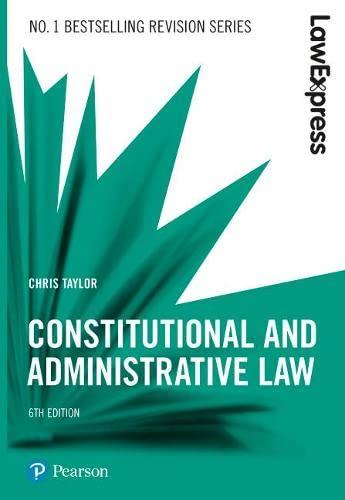Hi
I am not sure how to answer the question using ALL the provided informations. It will really help for my exam preparation.
Course: Commercial Law Assume that the Cemetery Safety Act 2020 received Royal Assent on 1 January 2020. No commencement date is stated in the legislation. When introducing the Bill into Parliament the Minister of Transport stated: "Due to the increase in serious accidents, personal injury and death, caused by people bringing their cars on to cemetery grounds this new piece of legislation is vitally important. In addition, during serious times of grieving and bereavement the last thing that mourners want is to be interrupted by the sound of vehicles." Section 2(1) of the Act states: In this Act: cemetery means any land held, taken, purchased, acquired, set apart, dedicated, or reserved exclusively for the burial of the dead generally. emergency services means Ambulance, Civil Defence and Fire services. medical practitioner means a health practitioner who is registered with the Medical Council of New Zealand as a practitioner of the profession of medicine; and holds a current practising certificate. vehicle means anything equipped with wheels or revolving runners on which it moves or is moved for the purpose of carrying a person or persons. Section 7 states: "Subject to section 13, no person shall drive any car, van, bus or other vehicle within cemetery grounds." Section 9 states: \"Every person who contravenes section 7 of this Act commits an offence and is liable on conviction to a fine not exceeding $10,000 or to a term of community service not exceeding 1 month.\" Section 13 states: \"Emergency service vehicles are exempt from the obligation in section 7.\" Section 14 states: \"Any vehicle belonging to a medical practitioner is deemed to be an emergency service vehicle.\" On 2 January 2020, Kiri went to visit her mother's grave. She is disabled and uses her motorised wheelchair within the cemetery to reach the gravesite. However, while distracted by some small children she crashes into an elderly man causing him to fall and break his arm. The police and ambulance services arrive 10 minutes later and drive on to the cemetery grounds. Andrew, a newly trained police officer is driving his police motorcycle and accidently hits a teenager who is running over to where the elderly man was injured by Kiri's wheelchair. Yunong, a doctor on holiday from Australia, is also passing by at the time in her rental car and sees all the commotion and the ambulance. Being nosey she drives into the cemetery. After parking she goes over to the crowd gathered around the old man. Kiri, Andrew and Yunong have all been reported to the police. REQUIRED: By referring to both general approaches to judicial approaches to statutory interpretation, intrinsic and extrinsic aids for interpretation and also any relevant maxims of interpretation, advise whether Kiri, Andrew and Yunong are likely to be found guilty of committing an offence under the Cemetery Safety Act 2020, and the possible consequences. Use ALL the provided informations. I Based on NewZealand Lawsystem







